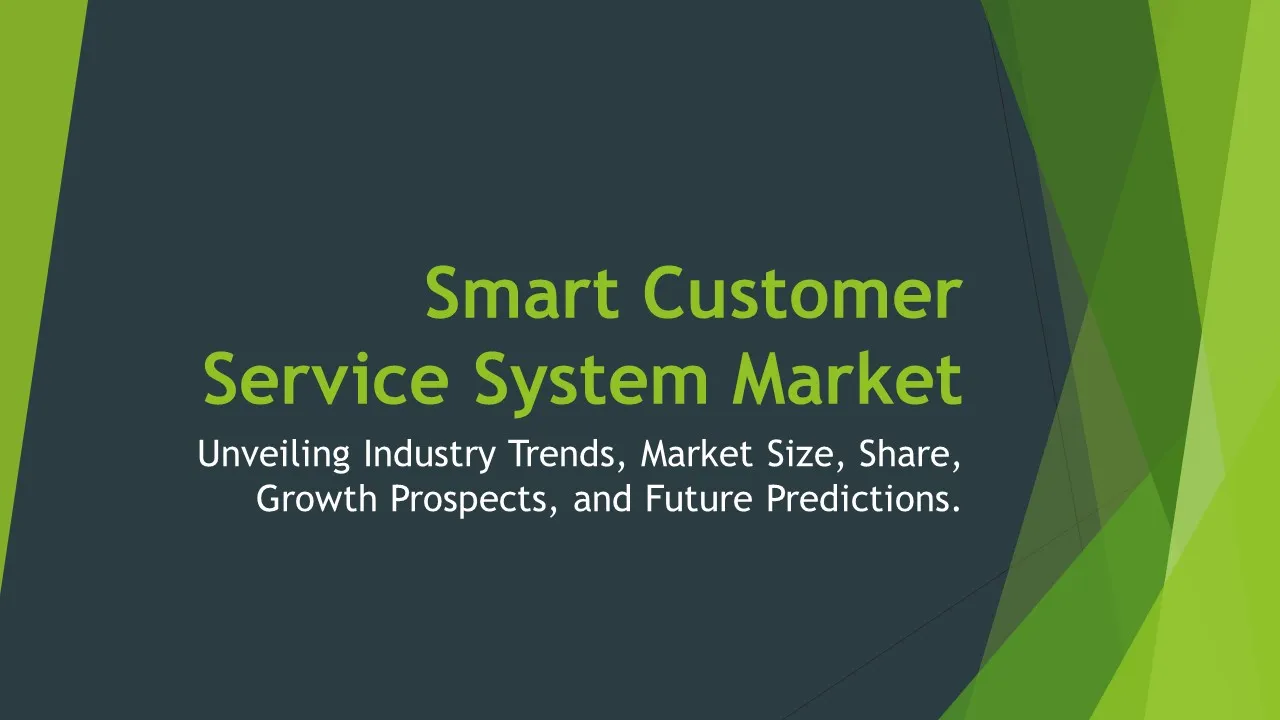NEWSQL Database
NEWSQL Database Market Segments - by Database Type (Relational NEWSQL Database, Distributed NEWSQL Database, Hybrid NEWSQL Database, In-Memory NEWSQL Database, Columnar NEWSQL Database), Deployment (On-Premises, Cloud), Organization Size (Small and Medium Enterprises, Large Enterprises), End-User Industry (BFSI, Healthcare, Retail, IT & Telecom, Manufacturing), and Region (North America, Europe, Asia Pacific, Latin America, Middle East & Africa) - Global Industry Analysis, Growth, Share, Size, Trends, and Forecast 2025-2035
- Report Preview
- Table Of Content
- Segments
- Methodology
NEWSQL Database Market Outlook
The global NEWSQL database market is poised for substantial growth in the coming years, with a projected market size reaching approximately USD 10 billion by 2035, growing at a CAGR of around 20% from 2025 to 2035. This growth is driven by the increasing need for real-time data processing, the rise of big data analytics, and the growing adoption of cloud computing technologies across various industries. Organizations are continuously looking for solutions that can provide the scalability and flexibility of NoSQL databases while retaining the robust transactional support of traditional relational databases. Furthermore, as businesses generate and rely on vast amounts of data, the demand for databases that can efficiently manage, store, and retrieve this information in real-time has never been greater, indicating a bright future for the NEWSQL database market.
Growth Factor of the Market
The growth of the NEWSQL database market can be attributed to several key factors, notably the increasing volume of data generated by businesses and the requisite need for efficient data management solutions. As organizations undergo digital transformation, they require databases that can support both high-volume transactions and complex queries while delivering low latency. Additionally, the scalability offered by NEWSQL databases is a crucial factor, enabling businesses to expand and adapt to changing market conditions without the need for a complete system overhaul. The push towards cloud adoption is another significant growth factor, as more companies look to leverage cloud-based database solutions for flexibility and cost savings. Enhancements in machine learning and artificial intelligence technologies are also contributing to the market's expansion, as these technologies enable advanced analytics and decision-making capabilities. Lastly, industries such as finance, healthcare, and e-commerce are further driving demand for NEWSQL databases to handle real-time transactions and analytics efficiently.
Key Highlights of the Market
- The NEWSQL database market is expected to reach USD 10 billion by 2035, growing at a CAGR of around 20%.
- Increasing need for real-time data processing and big data analytics is propelling market growth.
- Cloud-based solutions are gaining traction, providing flexibility and efficiency for enterprises.
- Enhanced scalability and performance characteristics are driving adoption across multiple industries.
- The healthcare and BFSI sectors are leading in the adoption of NEWSQL databases due to stringent regulatory requirements and the need for rapid transaction processing.
By Database Type
Relational NEWSQL Database:
Relational NEWSQL databases combine the benefits of traditional relational database management systems (RDBMS) with the scalability and performance enhancements characteristic of NoSQL solutions. They are designed to support ACID (Atomicity, Consistency, Isolation, Durability) properties, ensuring reliable transactions while also providing horizontal scalability. This design is especially beneficial for organizations that require both the robustness of relational databases for complex queries and the ability to handle larger data loads typical in modern applications. Industries such as finance and telecommunications are increasingly adopting relational NEWSQL databases to manage transactional data efficiently while ensuring compliance and security.
Distributed NEWSQL Database:
Distributed NEWSQL databases are architected to manage data across multiple servers and locations while maintaining a unified view of the information. This type of database is particularly advantageous for organizations that operate in a geographically dispersed manner or have fluctuating workloads, as it allows for higher availability and fault tolerance. By distributing data across nodes, these databases can handle large volumes of transactions without sacrificing performance. As businesses increasingly expand their operations globally, the demand for distributed NEWSQL databases is expected to rise, particularly in sectors such as retail and ecommerce, where customer interactions need to be managed uniformly across different regions.
Hybrid NEWSQL Database:
Hybrid NEWSQL databases combine features of both SQL and NoSQL systems, allowing organizations to benefit from the strengths of each. This type of database is particularly useful for businesses that require flexibility in their data management strategy, such as the ability to handle structured and unstructured data efficiently. Hybrid solutions can support a wide range of applications, allowing organizations to leverage existing relational databases while also incorporating NoSQL capabilities for new projects. Industries that are rapidly evolving, such as technology and media, are increasingly adopting hybrid NEWSQL databases to keep pace with changing demands and to enhance their data analytics capabilities.
In-Memory NEWSQL Database:
In-memory NEWSQL databases utilize RAM as the primary storage medium, allowing for significantly faster data processing speeds compared to traditional disk-based systems. This rapid access to data is crucial for applications requiring real-time analytics and instant data retrieval, making in-memory databases attractive for industries such as finance, where transactions must be processed rapidly and accurately. By minimizing latency, in-memory NEWSQL databases support high-frequency trading and real-time data analytics, enabling organizations to make informed decisions quickly. The demand for in-memory databases is expected to grow as more companies recognize the value of speed and real-time data analysis in today’s competitive landscape.
Columnar NEWSQL Database:
Columnar NEWSQL databases store data in columns rather than rows, which enhances performance for analytical queries and report generation. This architecture is particularly beneficial for organizations that need to perform complex queries on large datasets efficiently, as it minimizes the amount of data read from disk. The ability to quickly retrieve relevant data enables faster insights and improved decision-making across various sectors, such as marketing and business intelligence. As businesses increasingly rely on data analytics to drive strategy, the adoption of columnar NEWSQL databases is expected to become more prevalent, particularly among organizations focused on data-driven decision-making.
By Deployment
On-Premises:
On-premises deployment of NEWSQL databases allows organizations to maintain complete control over their data and database management operations. This model is particularly appealing for businesses in regulated industries such as finance and healthcare, where data privacy and security are paramount. With on-premises solutions, organizations can customize their infrastructure to meet specific performance and compliance needs, ensuring that sensitive data remains securely within their physical facilities. However, this approach can also be resource-intensive, requiring significant investments in hardware, maintenance, and skilled personnel to manage and support the database environment.
Cloud:
Cloud deployment of NEWSQL databases is rapidly gaining traction due to its flexibility, scalability, and cost-effectiveness. Organizations are increasingly turning to cloud-based solutions to eliminate the need for extensive on-premises infrastructure, allowing them to focus on core business activities rather than IT management. Cloud-based NEWSQL databases facilitate rapid deployment, enabling companies to easily scale their operations in response to changing demands. This deployment model is particularly attractive for small and medium enterprises (SMEs) that may not have the resources to manage an on-premises system. Additionally, cloud solutions often include advanced security features and regular updates, further enhancing their appeal in the modern business environment.
By Organization Size
Small and Medium Enterprises:
Small and medium enterprises (SMEs) are increasingly adopting NEWSQL databases to enhance their operational capabilities and compete effectively in the marketplace. With the rise of cloud-based solutions, SMEs can leverage scalable database technologies without the need for significant upfront investments in hardware and infrastructure. NEWSQL databases provide SMEs with access to advanced data management features that were previously only available to larger organizations, such as real-time analytics and transactional efficiency. This democratization of technology enables SMEs to harness the power of data, improve operational efficiency, and deliver better customer experiences, ultimately driving growth in this segment.
Large Enterprises:
Large enterprises are often at the forefront of adopting NEWSQL databases, driven by their need for robust data management solutions capable of handling vast amounts of data and complex queries. The scalability and performance of NEWSQL databases are essential for large organizations that operate across multiple geographies and sectors, requiring efficient data processing for both transactional and analytical workloads. Furthermore, these enterprises are increasingly focusing on real-time data analytics to gain a competitive edge in the market. By leveraging NEWSQL databases, large organizations can improve decision-making, enhance customer engagement, and streamline operations, leading to increased efficiency and revenue generation.
By User Industry
BFSI:
The Banking, Financial Services, and Insurance (BFSI) sector represents a significant user of NEWSQL databases, primarily due to the industry's stringent regulations and need for transaction security. NEWSQL databases are equipped to handle high-frequency transactions with low latency, ensuring compliance with industry standards while delivering real-time insights. This capability is crucial for risk management, fraud detection, and customer service enhancement within the BFSI sector. As the industry continues to evolve with the adoption of digital banking and fintech solutions, the demand for efficient and secure database technologies is expected to grow, positioning NEWSQL databases as a key component in the digital transformation of financial services.
Healthcare:
In the healthcare sector, NEWSQL databases are increasingly adopted to manage patient records, clinical data, and administrative information efficiently. The ability to handle large volumes of data securely while ensuring compliance with regulations such as HIPAA is paramount for healthcare organizations. NEWSQL databases facilitate real-time analytics, enabling healthcare providers to make informed decisions based on up-to-date patient information. Furthermore, as the healthcare industry increasingly turns to telemedicine and digital health solutions, the demand for scalable and reliable database systems will continue to rise, making NEWSQL databases an integral part of modern healthcare technology.
Retail:
The retail industry is rapidly embracing NEWSQL databases to enhance customer experiences and optimize supply chain operations. With the rise of e-commerce and omnichannel retailing, businesses need to manage vast amounts of data generated from customer interactions, purchases, and inventory management. NEWSQL databases provide the ability to analyze this data in real-time, enabling retailers to personalize marketing strategies, streamline operations, and improve inventory management. As customer expectations evolve, the demand for efficient database solutions that can handle real-time analytics and transactions is expected to grow, promoting the adoption of NEWSQL databases within the retail sector.
IT & Telecom:
IT and telecom companies are increasingly leveraging NEWSQL databases to meet the demands of high-velocity data generated by users and devices. The telecommunications sector, in particular, requires robust data management solutions to support real-time billing, customer service, and network performance monitoring. NEWSQL databases enable these organizations to process large volumes of data quickly and accurately, ensuring efficient service delivery and improved customer satisfaction. As the industry evolves with the growth of IoT and 5G technologies, the need for scalable and efficient database systems will continue to rise, further driving the adoption of NEWSQL databases in IT and telecom.
Manufacturing:
The manufacturing sector is also embracing NEWSQL databases to enhance operational efficiency and data-driven decision-making. With the rise of smart factories and Industry 4.0, manufacturers require robust data management solutions to process data from connected devices and sensors in real-time. NEWSQL databases allow organizations to analyze production data, monitor equipment performance, and optimize supply chains, leading to improved efficiency and reduced downtime. The ability to handle diverse data types and deliver real-time insights is essential for manufacturers looking to remain competitive in a rapidly changing market, thus driving the demand for NEWSQL database solutions in this sector.
By Region
The regional analysis of the NEWSQL database market reveals significant growth opportunities across various global markets, with North America leading the charge due to its established technological infrastructure and the presence of major players. The region is anticipated to account for approximately 40% of the global market share by 2035, driven by the rapid adoption of cloud technologies and increasing demand for real-time data processing capabilities. Additionally, the BFSI and healthcare sectors in North America are major contributors to this growth, as organizations seek reliable database solutions to manage sensitive information and comply with regulatory requirements. The CAGR for North America is projected to be around 18% during the forecast period, underscoring the region's robust growth potential.
Europe and Asia Pacific are also expected to exhibit substantial growth in the NEWSQL database market. Europe is projected to capture approximately 25% of the market share, driven by the growing demand for advanced data management solutions in sectors such as manufacturing and retail. The adoption of digital transformation initiatives by European businesses further propels the growth of NEWSQL databases in the region. Meanwhile, the Asia Pacific region is anticipated to experience the highest CAGR of around 22%, as countries like India and China rapidly embrace cloud technologies and big data analytics. The increasing focus on data-driven decision-making in these emerging economies is expected to create a favorable environment for the adoption of NEWSQL databases, thereby contributing to the overall market growth.
Opportunities
The NEWSQL database market presents a multitude of opportunities for vendors and organizations looking to harness the power of data. As businesses increasingly recognize the importance of data-driven decision-making, the demand for advanced database solutions is expected to rise significantly. This shift is particularly evident in sectors such as retail, healthcare, and BFSI, where real-time data processing and analytics are crucial for maintaining competitive advantage. Vendors that can offer innovative solutions that combine scalability, reliability, and advanced analytics capabilities will likely find substantial opportunities for growth. Additionally, as more organizations transition to cloud computing, the need for cloud-native NEWSQL databases that can seamlessly integrate with existing applications will also create opportunities for market players.
Furthermore, the rising adoption of IoT technologies across various industries will continue to drive demand for NEWSQL databases capable of managing and analyzing vast amounts of data generated by connected devices. The ability to process real-time data streams and provide actionable insights will be critical for organizations seeking to optimize operations and enhance customer experiences. Companies that can develop and market NEWSQL database solutions tailored to specific industry needs will be well-positioned to capitalize on this growing trend. Additionally, partnerships and collaborations with other technology providers can further enhance product offerings and expand market reach, creating opportunities for sustained growth in the NEWSQL database market.
Threats
While the NEWSQL database market presents numerous growth opportunities, it also faces several threats that could hinder its expansion. One significant threat is the increasing competition from alternative database technologies, such as traditional RDBMS and NoSQL solutions. As organizations evaluate their data management strategies, they may opt for established systems that they perceive as more reliable or familiar. This competitive landscape necessitates that NEWSQL database vendors continuously innovate and demonstrate the value of their solutions to retain existing customers and attract new ones. Additionally, the rapid pace of technological advancements could lead to the emergence of newer database paradigms that may outpace NEWSQL solutions, posing a challenge for market players to keep up with changing demands.
Another critical threat to the NEWSQL database market is the potential for cybersecurity risks. As data breaches and cyberattacks become more sophisticated, organizations are increasingly concerned about the security of their data management systems. Any vulnerabilities in NEWSQL databases that expose sensitive information could lead to loss of trust and confidence among customers and partners. As a result, database vendors must prioritize cybersecurity features and ensure compliance with industry standards to mitigate these risks and safeguard their market position. Additionally, economic uncertainty and fluctuations in IT budgets may impact organizations' willingness to invest in new database technologies, further challenging market growth.
Competitor Outlook
- Google Cloud Spanner
- Microsoft Azure SQL Database
- Cockroach Labs
- MemSQL
- VoltDB
- NuoDB
- FaunaDB
- Clustrix
- TimescaleDB
- MariaDB
- Apache Ignite
- Redis Labs
- Amazon Aurora
- IBM Db2
- PostgreSQL
The competitive landscape of the NEWSQL database market is characterized by the presence of various players, ranging from established technology giants to innovative startups. Major companies in this space, such as Google Cloud, Microsoft, and Amazon, have leveraged their cloud computing capabilities to deliver advanced NEWSQL database solutions that cater to a diverse range of industries. These companies often emphasize scalability, reliability, and integration with existing cloud services to attract customers looking for comprehensive data management solutions. Additionally, the presence of numerous startups focused on niche solutions offers a competitive edge, as they may be more agile and innovative in addressing specific market needs, creating a dynamic and rapidly evolving marketplace.
In particular, companies like Cockroach Labs and MemSQL have emerged as leaders in the NEWSQL space, providing robust solutions that combine the best of traditional SQL databases with the scalability of NoSQL technology. CockroachDB, for instance, is known for its distributed architecture that allows for horizontal scalability while maintaining strong consistency, making it ideal for applications that require high availability. MemSQL, on the other hand, offers an in-memory database that enables real-time analytics and data processing, catering to organizations with high-performance needs. This competitive focus on performance and scalability has positioned these companies favorably in the market, appealing to enterprises seeking innovative data management solutions.
Furthermore, companies like NuoDB and FaunaDB are carving out their niche by addressing specific market needs, such as cloud-native databases and multi-model database capabilities. NuoDB, for example, combines SQL capabilities with horizontal scalability, allowing businesses to deploy applications in the cloud while ensuring high availability. FaunaDB focuses on providing a globally distributed database with a serverless architecture, appealing to developers looking for scalable solutions without the complexities of traditional database management. As the market continues to evolve, these companies will likely play a significant role in shaping the future of the NEWSQL database landscape, driving innovation and competition.
1 Appendix
- 1.1 List of Tables
- 1.2 List of Figures
2 Introduction
- 2.1 Market Definition
- 2.2 Scope of the Report
- 2.3 Study Assumptions
- 2.4 Base Currency & Forecast Periods
3 Market Dynamics
- 3.1 Market Growth Factors
- 3.2 Economic & Global Events
- 3.3 Innovation Trends
- 3.4 Supply Chain Analysis
4 Consumer Behavior
- 4.1 Market Trends
- 4.2 Pricing Analysis
- 4.3 Buyer Insights
5 Key Player Profiles
- 5.1 NuoDB
- 5.1.1 Business Overview
- 5.1.2 Products & Services
- 5.1.3 Financials
- 5.1.4 Recent Developments
- 5.1.5 SWOT Analysis
- 5.2 MemSQL
- 5.2.1 Business Overview
- 5.2.2 Products & Services
- 5.2.3 Financials
- 5.2.4 Recent Developments
- 5.2.5 SWOT Analysis
- 5.3 VoltDB
- 5.3.1 Business Overview
- 5.3.2 Products & Services
- 5.3.3 Financials
- 5.3.4 Recent Developments
- 5.3.5 SWOT Analysis
- 5.4 FaunaDB
- 5.4.1 Business Overview
- 5.4.2 Products & Services
- 5.4.3 Financials
- 5.4.4 Recent Developments
- 5.4.5 SWOT Analysis
- 5.5 IBM Db2
- 5.5.1 Business Overview
- 5.5.2 Products & Services
- 5.5.3 Financials
- 5.5.4 Recent Developments
- 5.5.5 SWOT Analysis
- 5.6 MariaDB
- 5.6.1 Business Overview
- 5.6.2 Products & Services
- 5.6.3 Financials
- 5.6.4 Recent Developments
- 5.6.5 SWOT Analysis
- 5.7 Clustrix
- 5.7.1 Business Overview
- 5.7.2 Products & Services
- 5.7.3 Financials
- 5.7.4 Recent Developments
- 5.7.5 SWOT Analysis
- 5.8 PostgreSQL
- 5.8.1 Business Overview
- 5.8.2 Products & Services
- 5.8.3 Financials
- 5.8.4 Recent Developments
- 5.8.5 SWOT Analysis
- 5.9 Redis Labs
- 5.9.1 Business Overview
- 5.9.2 Products & Services
- 5.9.3 Financials
- 5.9.4 Recent Developments
- 5.9.5 SWOT Analysis
- 5.10 TimescaleDB
- 5.10.1 Business Overview
- 5.10.2 Products & Services
- 5.10.3 Financials
- 5.10.4 Recent Developments
- 5.10.5 SWOT Analysis
- 5.11 Amazon Aurora
- 5.11.1 Business Overview
- 5.11.2 Products & Services
- 5.11.3 Financials
- 5.11.4 Recent Developments
- 5.11.5 SWOT Analysis
- 5.12 Apache Ignite
- 5.12.1 Business Overview
- 5.12.2 Products & Services
- 5.12.3 Financials
- 5.12.4 Recent Developments
- 5.12.5 SWOT Analysis
- 5.13 Cockroach Labs
- 5.13.1 Business Overview
- 5.13.2 Products & Services
- 5.13.3 Financials
- 5.13.4 Recent Developments
- 5.13.5 SWOT Analysis
- 5.14 Google Cloud Spanner
- 5.14.1 Business Overview
- 5.14.2 Products & Services
- 5.14.3 Financials
- 5.14.4 Recent Developments
- 5.14.5 SWOT Analysis
- 5.15 Microsoft Azure SQL Database
- 5.15.1 Business Overview
- 5.15.2 Products & Services
- 5.15.3 Financials
- 5.15.4 Recent Developments
- 5.15.5 SWOT Analysis
- 5.1 NuoDB
6 Market Segmentation
- 6.1 NEWSQL Database Market, By Deployment
- 6.1.1 On-Premises
- 6.1.2 Cloud
- 6.2 NEWSQL Database Market, By Database Type
- 6.2.1 Relational NEWSQL Database
- 6.2.2 Distributed NEWSQL Database
- 6.2.3 Hybrid NEWSQL Database
- 6.2.4 In-Memory NEWSQL Database
- 6.2.5 Columnar NEWSQL Database
- 6.3 NEWSQL Database Market, By Organization Size
- 6.3.1 Small and Medium Enterprises
- 6.3.2 Large Enterprises
- 6.1 NEWSQL Database Market, By Deployment
7 Competitive Analysis
- 7.1 Key Player Comparison
- 7.2 Market Share Analysis
- 7.3 Investment Trends
- 7.4 SWOT Analysis
8 Research Methodology
- 8.1 Analysis Design
- 8.2 Research Phases
- 8.3 Study Timeline
9 Future Market Outlook
- 9.1 Growth Forecast
- 9.2 Market Evolution
10 Geographical Overview
- 10.1 Europe - Market Analysis
- 10.1.1 By Country
- 10.1.1.1 UK
- 10.1.1.2 France
- 10.1.1.3 Germany
- 10.1.1.4 Spain
- 10.1.1.5 Italy
- 10.1.1 By Country
- 10.2 Asia Pacific - Market Analysis
- 10.2.1 By Country
- 10.2.1.1 India
- 10.2.1.2 China
- 10.2.1.3 Japan
- 10.2.1.4 South Korea
- 10.2.1 By Country
- 10.3 Latin America - Market Analysis
- 10.3.1 By Country
- 10.3.1.1 Brazil
- 10.3.1.2 Argentina
- 10.3.1.3 Mexico
- 10.3.1 By Country
- 10.4 North America - Market Analysis
- 10.4.1 By Country
- 10.4.1.1 USA
- 10.4.1.2 Canada
- 10.4.1 By Country
- 10.5 NEWSQL Database Market by Region
- 10.6 Middle East & Africa - Market Analysis
- 10.6.1 By Country
- 10.6.1.1 Middle East
- 10.6.1.2 Africa
- 10.6.1 By Country
- 10.1 Europe - Market Analysis
11 Global Economic Factors
- 11.1 Inflation Impact
- 11.2 Trade Policies
12 Technology & Innovation
- 12.1 Emerging Technologies
- 12.2 AI & Digital Trends
- 12.3 Patent Research
13 Investment & Market Growth
- 13.1 Funding Trends
- 13.2 Future Market Projections
14 Market Overview & Key Insights
- 14.1 Executive Summary
- 14.2 Key Trends
- 14.3 Market Challenges
- 14.4 Regulatory Landscape
Segments Analyzed in the Report
The global NEWSQL Database market is categorized based on
By Database Type
- Relational NEWSQL Database
- Distributed NEWSQL Database
- Hybrid NEWSQL Database
- In-Memory NEWSQL Database
- Columnar NEWSQL Database
By Deployment
- On-Premises
- Cloud
By Organization Size
- Small and Medium Enterprises
- Large Enterprises
By Region
- North America
- Europe
- Asia Pacific
- Latin America
- Middle East & Africa
Key Players
- Google Cloud Spanner
- Microsoft Azure SQL Database
- Cockroach Labs
- MemSQL
- VoltDB
- NuoDB
- FaunaDB
- Clustrix
- TimescaleDB
- MariaDB
- Apache Ignite
- Redis Labs
- Amazon Aurora
- IBM Db2
- PostgreSQL
- Publish Date : Jan 21 ,2025
- Report ID : IT-69316
- No. Of Pages : 100
- Format : |
- Ratings : 4.5 (110 Reviews)









